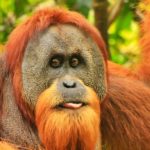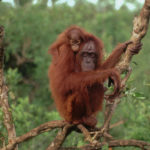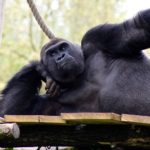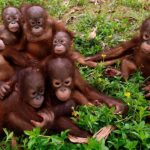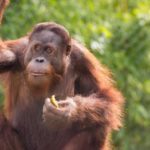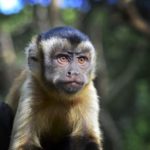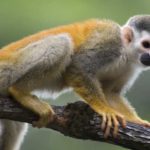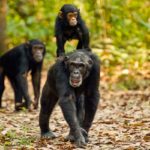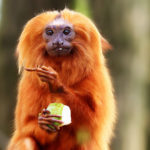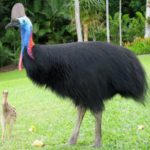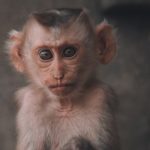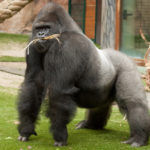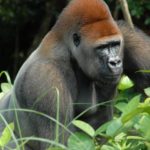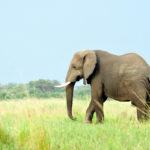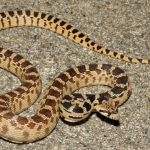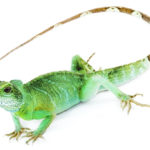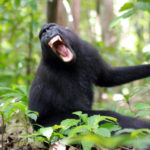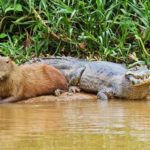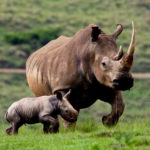Orangutans – information
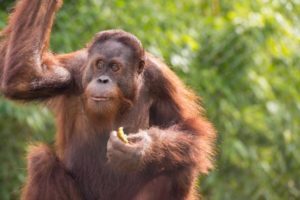 Orangutans are the only anthropoid apes living in Asia, but they live only on the islands of Sumatra and Borneo. In translation from the Malay and Indonesian languages ”orangutan” means “forest man”. The locals really considered them to be people who hide in the woods and pretend to be dumb to not work and not be enslaved.
Orangutans are the only anthropoid apes living in Asia, but they live only on the islands of Sumatra and Borneo. In translation from the Malay and Indonesian languages ”orangutan” means “forest man”. The locals really considered them to be people who hide in the woods and pretend to be dumb to not work and not be enslaved.
Together with other anthropoid apes (chimpanzees and gorillas) and humans, orangutans belong to the hominid family (Hominidae). In it they form a separate genus – Pongo, which includes two species – Sumatran (Pongo abelii) and Borneo (Pongo pygmaeus) orangutans. Outwardly, both species are very similar, but the Sumatran orangutans are thinner than their Borneo brothers, their faces are longer, and the wool is lighter.
95 percent of the time orangutans spend on trees and are the largest tree species on the planet. I must say, they are perfectly adapted to such a life. Their hands are very long (their range can reach two meters), and the thumbs of the hands and feet are opposed to the rest, so that the monkey can cling to the branches with both hands and feet. Move along the orangutan trees and help the mobile shoulder and hip joints. They, like experienced yogis or circus acrobats, can sit on “twine”, clinging to neighboring branches or small trees. In the trees, monkeys are looking for food (not only fruits, bark and leaves, but also honey, insects, and sometimes bird eggs and even large game – slow lori). In the trees they move from place to place, they sleep in nests from branches, and even to get drunk, monkeys do not go down, but they prefer to drink water from the hollows or lick it from the leaves.
Apparently, a single way of life influenced the long maturation and slow reproduction of “forest people”. Prepare a baby for adulthood can only be a mother: to watch how other monkeys behave, he has nowhere to go. Therefore, the young remain with the mother for 6-8 years, this is the longest growing period in mammals (except humans). In addition, the orangutans have the longest mammalian period between pregnancies – an average of 7-8 years. Taking into account the fact that females give birth to first-born in 14-15 years, and orangutans live in the wild, according to various data, up to 40 or 50 years old, in the whole life the female has time to give birth and raise 4-5 calves. The males of the orangutans, becoming sexually mature, acquire long hair, “cheeks” (in fact, these are dermal outgrowths resembling rollers) and a throat pouch that allows them to make a roar that attracts females and discourages rivals.
